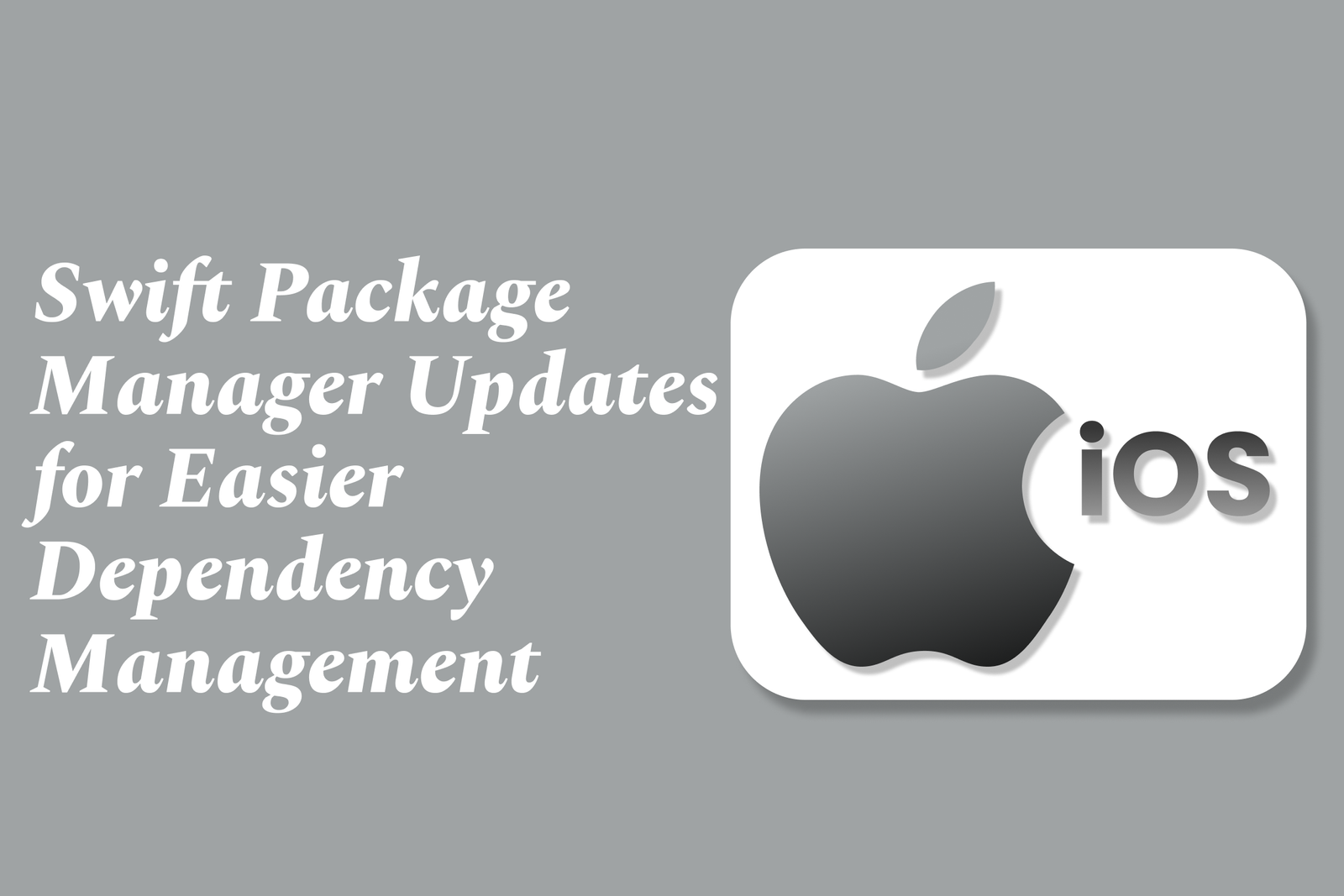Swift Package Manager Updates for Easier Dependency Management
Swift Package Manager updates streamline dependency management by improving Xcode integration, speeding up package resolution, and enhancing support for remote and local packages, making it easier for developers to add, update, and maintain dependencies efficiently in Swift projects.
Swift Package Manager Updates for Easier Dependency Management
1 ) Challenges with Swift Package Manager (SPM) in Xcode
Developers face difficulties updating targets, switching branches, or deleting dependencies within Xcode’s SwiftPM interface, which only supports adding and updating.
For Xcode projects (xcodeproj), managing dependencies is possible via the “Packages” tab, but users sometimes struggle to find or use it properly.
Frequent frustrating “Resolve packages” processes occur, especially in complex monorepos, causing hangs that impact developer productivity.
SPM has issues with remote dependency management: errors with SSH, Git, caching, and slow or failed downloads often force teams to revert to other tools like Carthage for external dependencies.
Lack of robust configuration options (such as differing build settings per environment) hinders use of SPM in complex settings.
Xcode performs resolving packages even for local dependencies frequently, including on file addition or switching branches, leading to slow builds.
2 ) Advantages of Using Swift Package Manager
Integration with Xcode improves workflow by eliminating the need for extra files like Podfiles, making dependency addition straightforward via the UI.
No need for maintaining or publishing podspec files; tagging git releases is sufficient.
Being a first party open source solution, SPM works well with CI systems without installing additional software.
Xcode cleanly displays package dependencies and versions within the project.
Working with private packages is simpler by linking directly to private repositories, avoiding burdensome private specs repos.
Package.resolved files are stored within project directories, facilitating source control integration.
3 ) Managing Swift Packages within Xcode
For pure Swift package projects, editing the Package.swift file directly is recommended and changes are detected by Xcode.
For Xcode projects, users can modify packages via the “Packages” tab found in the project editor.
To update remote dependencies linked to branches (e.g., “master”), Xcode’s menu option File > Swift Packages > Update to Latest Package Versions refreshes packages.
Common operations like adding files can trigger package resolves, which may slow development; currently, there is no official way to disable or manually control these resolves.
4 ) Creating and Using Custom Swift Packages
Swift packages promote modularity and reusability by allowing code to be shared easily across different Xcode projects.
Creating a new package is simple via Xcode’s File > New > Package menu with a guided setup.
Packages can be targeted for various platforms with minimum deployment versions declared in Package.swift.
Packages integrate smoothly by adding them under project’s “Frameworks, Libraries and Embedded Content”.
Organizing package source files in well structured folders within the package enhances maintainability.
Updates to the package propagate consistently throughout all projects using it, facilitating centralized updates and better collaboration.
5 ) Summary: Current State and Outlook
While Swift Package Manager significantly simplifies dependency management compared to older tools like CocoaPods, it has shortcomings in handling complex or large scale projects, particularly around performance and configuration agility in Xcode.
Frequent “Resolve Package” delays, limited environment specific build configurations, and instability with remote dependencies challenge developer workflows.
Despite these issues, SPM remains an appealing first party, integrated tool that streamlines basic dependency management and encourages modular code sharing.
Developers and teams often supplement SPM with other tools or local binaries to work around current limitations while awaiting further improvements in Xcode and SwiftPM stability and features.
https://justacademy.in/news-detail/android-security-vulnerability-patches
https://justacademy.in/news-detail/google-play-store-policy-changes-2025
https://justacademy.in/news-detail/android-app-analytics-tools-news
https://justacademy.in/news-detail/android-device-update-policies
https://justacademy.in/news-detail/is-react-native-still-competitive-with-flutter?
Related Posts
In 2025, top Angular libraries offer modern, feature-rich components and tools for building dynamic web apps. From powerful data grids to low-code platforms like UI Bakery, these libraries enhance development speed, UI design, and scalability, making them essential for Angular developers.
Migrating from AngularJS to Angular 17 involves gradually upgrading your app by running both frameworks together using tools like ngUpgrade, rewriting components in TypeScript, and adopting Angular’s modern architecture to enhance performance, maintainability, and long-term support.
Angular state management tools help organize and handle app data efficiently, improving scalability and maintainability. Popular options include NgRx for robust, RxJS-based patterns, and newer Signal Store solutions that offer simpler, reactive approaches integrated tightly with Angular’s latest features.
RxJS in Angular empowers developers to manage asynchronous data streams with powerful operators like `forkJoin`, `combineLatest`, and `zip`. Mastering these key operators in 2025 is essential for building efficient, reactive applications that handle complex event sequences seamlessly.
Angular performance optimization in 2025 focuses on improving app speed and responsiveness by using techniques like OnPush change detection, lazy loading, efficient data caching, and AOT compilation. These practices reduce load times, enhance user experience, and ensure scalable, fast Angular applications.
In 2025, Angular remains preferred for large-scale, enterprise apps with its robust, all-in-one framework, while Vue attracts developers seeking simplicity and fast development for smaller projects. Both frameworks excel, with choice driven by project needs and team expertise.
Angular Signals are a new reactive primitive in Angular 16 that enable fine-grained, efficient change detection by automatically tracking dependencies and updating only affected parts of the UI. They simplify state management and boost app performance, revolutionizing Angular's reactivity model.
Angular interview questions to prepare in 2025 focus on core concepts like components, directives, data binding, routing, and dependency injection, along with TypeScript mastery and latest Angular features to ensure strong practical knowledge for building scalable, efficient web applications.
AngularJS reached its official end of support in January 2022, meaning no further updates or security patches. To ensure app security and performance, developers should consider migrating to modern Angular versions or seek third-party long-term support options if immediate migration isn’t possible.
The Angular Roadmap 2025 highlights upcoming features focused on improving developer experience and performance, including zoneless Angular, Signals integration, enhanced Forms, async data handling, improved HMR, and expanded Angular Material/CDK enhancements, driving modern, efficient web app development.










